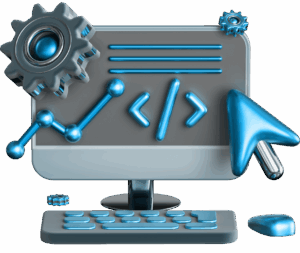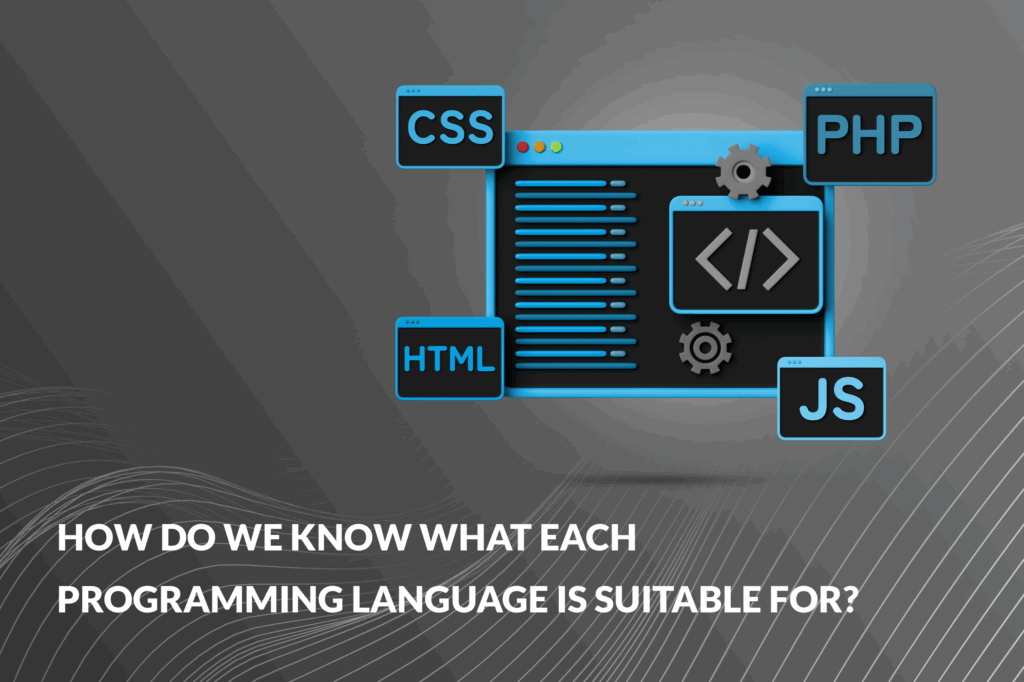One of the most popular and in-demand jobs in the digital world these days is programming, and someone who has the skills, knowledge, and experience in software development sets themselves apart from the rest.
Programming languages are actually commands that programmers give to computers to direct them to perform the desired task, and they are divided into several categories.
level of programming language
- Low-level languages: Close to machine language such as assembly.
- High-level languages: Languages that are more readable and understandable to humans.
Translation type:
- Compiled language: Requires the generation of an executable file, such as C++
- Interpreted languages: execute code line by line, such as Python.
Programming style:
- procedural
- object-oriented
- functional
- logic base
useability:
- Web development
- Artificial Intelligence and Data Science
- Mobile application development
- System programming
- Game programming

Programming samples of Hamrahan Honar Kavir Company
What is a compiler language?
The definition of compiled programming languages is as follows:
- First, the program must be translated for the computer to understand.
- In the second stage, the file is executable and works at good speed.
- In the third step, if you make a mistake somewhere, the compiler will get stuck at the very beginning and the program will have difficulty executing.
An example of this is a book that is translated and reaches the person who reads it.
What are interpreted languages?
Generally, interpreted languages are those that have the following features:
- In these programming languages, the file is executed line by line without the need to create an executable file.
- Ability to test faster or change the program faster.
- But the execution speed is slower due to the translation of each line into computer language.
An example of this would be if someone were to simultaneously translate the sentences you are currently speaking.
Programming Language Styles: A Look at History and Differences
Different programming styles are like philosophies for problem solving. Each has a specific view on how programs should be written and executed. In this article, we will learn about the history of the emergence of these styles and examine their differences.
Procedural Style
This style was born in the 1960s, when programming needed more structure. In the procedural style, programs are divided into a set of functions that are executed step by step.
This style is simple, understandable, and suitable for small, linear problems. Languages like C and Pascal were built on this foundation.
Object-oriented Style
The 1980s were the birth of the object-oriented style — a response to the need for large, complex software. In this style, programs are built from “objects” that hold data and behavior together.
Its core concepts include encapsulation, inheritance, and polymorphism. Languages like Java, C++, and Python adhere to this style.
Functional Style
Inspired by the world of mathematics, the functional style emerged in the 1970s. In this style, programs are written with pure functions that do not change state and have no side effects.
Ideal for parallel programming and reliable systems. Examples of its languages include Haskell, Elixir, and Scala.
Logic based Style
Along with the functional style, the logical style was born. This style defines programming based on logical truths and rules.
Instead of explaining “how” to solve, we just say “what” is true. They are very effective in building expert systems and artificial intelligence. Prolog is the epitome of this style.
Declarative
A style that became popular in the 90s and focuses on “what needs to be done.” In this style, the programmer only states the goal and the language itself chooses the path to achieve it.
Languages like SQL and HTML are examples of this approach—simple, powerful, and well-suited for working with data and automation.

Programming languages and their role in today’s world
A heartwarming tale of technology, creativity, and logic
In the fast-paced digital world, programming languages act as the beating heart of systems and applications. Each of them has its own unique characteristics; like different characters playing a role in a technological story. It is not without reason that sometimes programmers fall in love with their own language and choose it as a means of expressing their thoughts and ideas.
Now let’s review the important applications of programming languages—from websites to intelligent systems, from exciting games to cybersecurity:
Web Development: A Place to Be Seen
When we talk about the Internet and websites, the first thing that comes to mind behind the scenes are programming languages, from visual design to connecting to the database and executing operations on the server.
- HTML and CSS create the appearance of the website; such as color combinations, fonts, and layout.
- JavaScript breathes life into a site by adding animations and dynamic interactions.
- Python, PHP, and Node.js operate on the server side, meaning behind the scenes that the user doesn’t see but controls everything.
If you want to launch an online store or an educational platform, you should definitely go for languages that are professional in web development.
Mobile Apps: Technology for Life
Today, many everyday services are delivered through mobile apps. From ordering food to banking to learning a language, all are built thanks to mobile-specific programming languages.
For Android, Java and Kotlin are common choices, while iOS apps are typically developed with Swift. The Dart programming language, along with the Flutter framework, allows you to build an app for both platforms at the same time.
So if you have the idea of building a cross-platform app, the choice of programming language will determine the development path.
Artificial Intelligence and Machine Learning: Machine Thinking with Programming Language
One of the most exciting applications of programming languages is in artificial intelligence and machine learning. It’s not just about coding; it’s about learning, analysis, and decision-making.
Python is known as the most popular programming language in the AI field, as it has libraries like TensorFlow, PyTorch, and Scikit-learn. R is a strong choice for statistical analysis, and Julia is also popular for scientific projects.
If you want to build a predictive model that analyzes user behavior or, for example, classifies medical images, you must first choose an appropriate programming language.
Game development: Fun with logic and graphics
For fans of the virtual world, programming languages play a key role in creating computer games. The games we see are not just about graphics; they are full of logic and algorithms behind the scenes.
C++ and C# are among the languages used in popular engines like Unreal and Unity. Web games are also commonly built using the JavaScript programming language.
If you plan to create a game whose characters act intelligently, you definitely need to choose an appropriate programming language to design the game logic.
Data Analysis: Extracting Meaning from Information
Data is everywhere! But it’s useless until it’s analyzed. That’s where programming languages come in to help make sense of the data.
Python is one of the most popular languages in the field of Data Science, with tools like Pandas and Matplotlib. R is also used for statistical analysis and SQL for extracting information from databases.
So if your business is data-driven, choosing the right programming language will pave the way for analysis.
Cybersecurity: Digital Protectors
In the high-risk virtual world, security comes first, and programming languages are widely used in the design of security tools, penetration testing, and cryptography.
Python is very useful for building security tools and analyzing suspicious behavior. Languages like C, C++, Assembly, and Rust are also used to write low-level, high-performance software.
So, if you’re going to build a digital defense wall, you need to choose the right programming language carefully.
Systems and hardware programming
When you want to communicate directly with hardware or design an operating system, you need low-level programming languages like C and Assembly. These languages allow for memory and resource management and are suitable for projects where speed and complete control are required.
Rust has also recently entered this field and has received attention for its memory safety and high performance.

Conclusion on the appropriate choice of programming languages
At first glance, all programming languages may seem similar to each other, but in reality, each one has its own differences, meaning that each of them is designed with a specific philosophy and is intended for a specific application.
If you are planning to enter the world of programming, the most important step is to identify your goal. That is, you need to see what type of development you need, web? Mobile? Artificial Intelligence? Or other areas of programming, and then choose the most appropriate programming language to get started.


